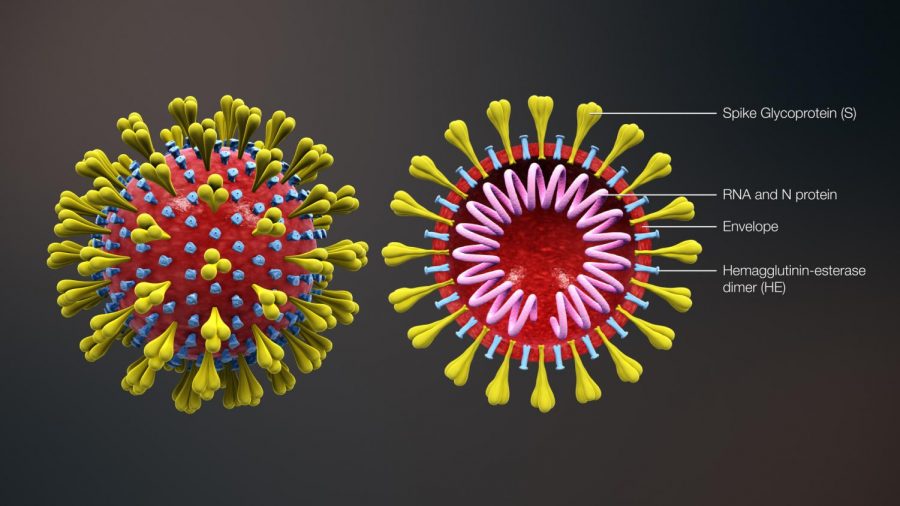Debating Viruses: Dead or Alive?
Virus, a word stemming from the Latin word for “poison,” is essentially a piece of genetic material that attacks your body’s healthy cells. All viruses are unique, which makes them difficult to cure. Some have RNA genomes and others have DNA genomes. Some are single-stranded while others are double-stranded. However, one common factor that surrounds all viruses is the question of: are they living? For centuries, scientists and philosophers have debated this question, but an answer has never been unveiled.
According to TheConversation.com, “viruses are the most common biological entities on Earth…if they were lined side-by-side, they would stretch from one side of the galaxy to the other.”
As stated before, a virus is a piece of genetic material containing a few proteins. These proteins work to invade healthy cells in a hosts’ body and copy itself until an infection occurs. Many viruses, such as COVID-19, originated in other organisms besides humans. Unfortunately, they are able to mutate to become infectious to humans.
SARS-CoV-2, more commonly known as COVID-19, originated in Wuhan, China in December 2019. According to the CDC, “coronaviruses are a large family of viruses that are common in people and many different species of animals, including camels, cattle, cats, and bats.” What’s unusual about this specific type of coronavirus is that it spread from animals to human beings. In this case, many believe the virus to be linked to a seafood market that was selling bats. Like many other types of viruses, COVID-19 spread by human contact, specifically through droplets released into the air, making it airborne and very contagious.
The first virus was discovered in the 1900s and research continued to expand after the discovery of the microscope and then innovative biomedical technology. However, one question that has been engraved in many scientists’ minds is whether viruses are abiotic or biotic.
To be considered living, an organism needs to meet the following criteria. According to a Khan Academy article, living things need to maintain homeostasis, have different levels of organization, reproduce, grow, use energy, react to stimuli, and adapt to their environment. Viruses follow about three or four of these necessities, but they fail the others.
The criteria that they pass include that they have organization and they can adapt to their environment. Viruses have a very structured organization since they are made of genes from nucleic acids and a capsid made of subunits called capsomeres. Each of these smaller products come together to form a virus. Viruses also are able to adapt to their environment through two adaptative phases: the lytic phase and the lysogenic phase. If the host cell does not supply enough energy to the virus to multiply, the virus will go into the lysogenic phase in order to mutate quickly.
Some criteria that scientists are unsure about due to the lack of research and experimentation are that a virus is able to reproduce, use energy, and respond to stimuli. One that may be deemed as confusing is the ability to reproduce. The whole idea of a virus is that they replicate until the host is infected. However, replication is different from reproduction. Viral cells do not have the proper organelles to reproduce, so instead, they enter host cells and utilize cellular equipment to replicate their genetic information on their own.
On the other hand, many consider viruses nonliving for the reason that they rely on the cells of a host to function and reproduce. Specifically, when viruses leave host cells, they do not have the ability to function. Viruses also fail the test of being alive because they are unable to maintain homeostasis and grow.
As stated Gege Li in an article discussing the aliveness of viruses, “ultimately, science may never agree on whether viruses are alive or not. E. Rybicki described them as being “at the edge of life” – for now, this may be the closest we will get to an answer.”
Your donation will support the student journalists of Parkland High School. Your contribution will allow us to purchase equipment and cover our annual website hosting and printing costs.










